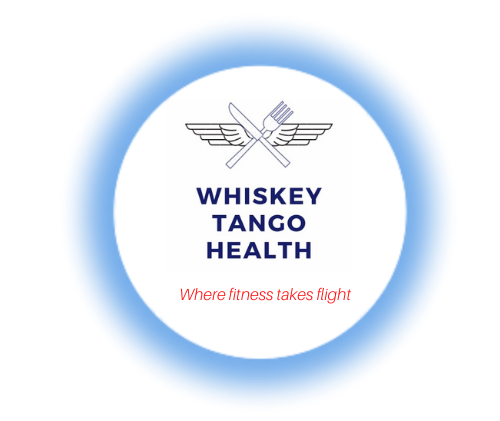Fasting is simply the time you are not eating. Fasting makes so many people nervous, however we all fast every day. We fast between meals and have our long fast when we sleep, hence the first meal of the day is the breakfast (break-fast). There are many misconceptions about fasting, there are myths and then there is the science of fasting and we will get into all of it in this section. That being said, there are also reasons NOT to fast and those that should not fast for longer periods of the day.
Fasting is a very important part of our daily cycles, however extended fasts have been practiced for as long as humans roamed the earth. We humans have fasted for many reasons, because of famine, because of religion, and for medicinal reasons to name a few. Our bodies are designed to “feast and fast”, meaning eating for short periods of time then not eating for longer periods of time and there are many benefits of fasting.
When we are not eating, our bodies go into a fasting state. This opens many pathways, or systems for our bodies to burn fuel from different sources. Our bodies also go into a maintenance phase during a fast. We turn on the parasympathetic nervous system, which allows our bodies to do different tasks. We also are giving our digestive system a break which allows those muscles and tissues a time to rest and repair as well as lower insulin production. And of course, it’s a form of calorie restriction so our bodies need to find energy elsewhere, stored fat.
But what about blood sugar? What about starvation? If we are in starvation mode, won’t we use muscle tissue to survive? Weren’t we told to eat many times a day to keep metabolism up? All these are things we have been told in modern times, mostly by the food industry to sell more food. There is no real science behind these statements, in fact, the science supports the exact opposite. So, let’s take these misconceptions one by one.
First, let’s talk about blood sugar. For most people, those that don’t have certain and rare diseases, our bodies make all the blood glucose (sugar) we need to survive in our liver through glucogenisous. Basically, our liver converts fats and protein into glucose as our body needs it, there really isn’t a need to consume dietary sugar (carbohydrate). So yes, we NEED blood sugar to survive, however we don’t need to consume it.
Starvation, starvation mode and metabolism. Starvation is a real thing, starvation mode is a real thing, however it happens way down the road in the process. Depending on how much stored energy (fat) we have in our bodies, this happens after many weeks of no food. One of the most comprehensive studies on starvation was by Ancel Keys at the University of Minnesota in 1944. He was studying starvation because of the post WWII famine in Europe. He used college students that were healthy and was able to control their entire environment. Since then there have been other studies that focus more on the fasting and not absolute starvation. Starvation and fasting are two completely different things. Our bodies have evolved to protect itself. When our bodies need energy, they go after the easiest energy there is to obtain, stored fat. Our bodies use this fat to produce ketones (Keto Diet) for fuel. Depending on how metabolically healthy an individual is, the liver will produce ketones every day during sleep usually. If you continue to fast throughout the day, or eat a very low carbohydrate diet, you will remain fueling your body on ketones. More on that (here). Will your body use muscle for fuel? Yes, but this is after every other available source for fuel has been used, usually after months of starvation. In fact, during a fast we actually build muscle faster using pathways called mTOR.
Studies show that the Basal Metabolic Rate (BMR) actually increases during a fast. Pathways such as mTOR activate to increase muscle growth and lean mass actually increases in a fast. This is thought to be the way our ancient ancestors were able to function during times of famine or during times between kills. We actually get more efficient during a fast.
Our bodies need fuel of course, so when there is no dietary glucose or sugar coming in, we make glucose and ketones in the liver. These fuel sources are vital for life. The brain for instance can use both glucose and ketones for fuel, but some parts of the brain can only use ketones as glucose cannot penetrate the blood brain barrier in some parts of the brain. In fact, brain scans show that those that eat a high sugar diet loose brain size over time.
Since fasting by definition is a time we are not eating, insulin is not being produced in the pancreas in large quantities. As discussed in ground school (here) too much insulin in the blood creates hyperinsulemia which over time becomes insulin resistance and will reduce the effectiveness of insulin. This has many long term and short term negative effects. During a fast, blood insulin is reduced and over time, hyperinsulemia and insulin resistance is reversed. We become insulin sensitive again, meaning the insulin can perform efficiently and effectively again.
There are different types of fasts. The most common in Intermittent Fasting (IF) or Time Restricted Eating (TRE). Intermittent Fasting (IF) is when we fast for most of the day, and eat only in a feeding window. You will see this as 16:8, 12:12, 14:10 or some other ratio no less than 12:12. This means we are fasting for the first number in hours and eating in the second number in hours. Everyone is different, some people prefer to eat in the morning and some prefer to eat later in the day. An example would be you eat you finish eating at 7pm, only have water or tea until bed time, then wake up have water, black coffee or tea (no sugar added) then feel hungry around 11am, have your first meal and eat again around 5pm or 6pm to finish eating by 7pm. Your “feeding window” was 11am-7pm (8 hours) and your fasting window was from 7pm-11am (16 hours). This could also be wake up and break your fast at 7am, eat your last meal around 2pm or 3pm and fast again until 7am. That is one of the most popular ways to fast. The 12:12 is basically the way we used to eat until the 1980’s. People would eat breakfast at 7am, lunch at noon and dinner at 6pm then not eat again until 7am. However, over the past 30 years or so, we have become a population of “grazers” constant eating during all waking hours. This doesn’t give or bodies time enough to rest and keeps insulin up the entire day.
A 24 hour fast would look like this, finish dinner at 6pm, drink only tea or water until bed time, wake up have water, tea, coffee (no sugar or milk added) and have only that to drink until 6pm, then eat a normal meal. A 36 hour fast sounds like a long time, however is not as bad as it sounds. You finish eating around 7pm, again only water or tea (no sugar) until bed time. Wake up, only have water, coffee or tea until bed time. Wake up and have your breakfast at 7am, even though you’ve fasted for 36 hours, 16 of those hours were asleep.
Autophagy happens during the fast, it’s hard to say but is normally accepted that autophagy begins to happen around 12 hours into a fast and is at it’s peak around 36-48 hours. Autophagy is the process where your old cells are being recycled by your new cells. This is very important, it happens everyday, but is accelerated through fasting.


